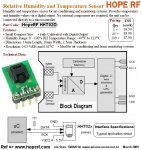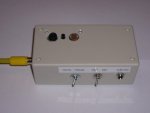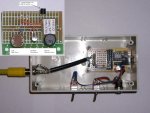westaust55
Moderator
Thought this information might be of interest to others.
Looking to add a simple humidity sensor to an 08M to use along with a DS18B20 (temp_ and LDR (light) as a mini weather station using a 433MHz link back to my main (40X1) PICAXE module.
Have found the HOPE RF HH10D sensor. Ref: http://www.hoperf.com/pro/hh10d.html
Futurlec have this for sensor for AUD$13.37
The module has an i2c EEPROM which the manufacturer puts a couple of bytes of calibration data in. Can read this calibration data once with the 40X1 as the data does not change.
Thereafter the actual measurements are a frequency output which the 08M can “read” and use the formula from the datasheet to calculate taking into account the offset and sensitivity values.
A search of the forum did not find anyone else having used this module but makes for a simple humidity sensor which does not require SPI or i2c and thus simple to interface to the 08M using a single input pin.
EDIT: should mention the HOPE RF datsheet does have an error on page 2 in the Application Circuit diagram where the Vdd and Vss are crossed between the microcontroller and the humidity module.
Looking to add a simple humidity sensor to an 08M to use along with a DS18B20 (temp_ and LDR (light) as a mini weather station using a 433MHz link back to my main (40X1) PICAXE module.
Have found the HOPE RF HH10D sensor. Ref: http://www.hoperf.com/pro/hh10d.html
Futurlec have this for sensor for AUD$13.37
The module has an i2c EEPROM which the manufacturer puts a couple of bytes of calibration data in. Can read this calibration data once with the 40X1 as the data does not change.
Thereafter the actual measurements are a frequency output which the 08M can “read” and use the formula from the datasheet to calculate taking into account the offset and sensitivity values.
A search of the forum did not find anyone else having used this module but makes for a simple humidity sensor which does not require SPI or i2c and thus simple to interface to the 08M using a single input pin.
EDIT: should mention the HOPE RF datsheet does have an error on page 2 in the Application Circuit diagram where the Vdd and Vss are crossed between the microcontroller and the humidity module.
Last edited:



